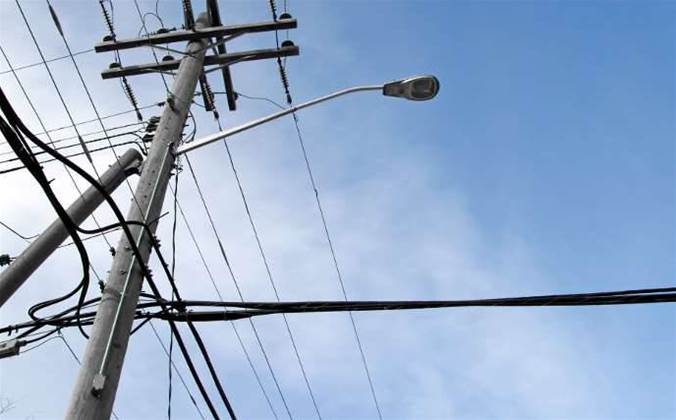The federal government is likely to face opposition over its proposal to increase the thickness of overhead cables erected as part of the national broadband network "to the size of your wrist" without requiring local or state planning approvals.

Under schedule three of the Telecommunications Act and related regulations, carriers currently have limited immunity from local, state and territory planning and environmental laws when installing overhead cables with a diameter of 30mm or less.
But in a consultation paper released by the Department of Communications late last week, the federal government proposed extending the exemptions, known as the low-impact facilities determination (LIFD), to cables with a diameter of up to 48mm, among other changes.
According to the discussion paper, NBN - the national network builder - has advised that in some HFC areas it will be necessary to piggy-back additional cables on existing overhead cable bundles as part of the network rollout.
In some areas where copper is used for the final mile, additional overhead cables of up to 40mm in diameter will need to be rolled out, although NBN has claimed this will only occur in “very limited circumstances”.
The rollout of overhead cables has traditionally attracted controversy, especially in the leafy inner suburbs of some of Australia’s mainland capital cities.
During the 1990s, community groups in Boroondara, in Melbourne’s east, and Haberfield, in Sydney’s inner west, prevented Optus rolling out aerial HFC cables in their suburbs.
In 2009, an NBN senate select committee heard vigilantes had threatened to tear down any overhead cables installed as part of the rollout. Other submissions from community groups warned there would be a “cost in tree vandalism and road deaths” in stringing up overhead cables.
Independent ICT researcher and consultant Ross Kelso said the government's proposal indicates the visual impact of the changes will be minimal, but doesn't discuss existing power cabling and wires.
“There’s already a significant amount of overhead infrastructure on poles, so it’s not true that this won’t be noticed," he told iTnews.
“While they have previously increased the limit, 48mm is almost the size of your wrist in diameter.”
Kelso said the proposed changes would mean overhead cabling could be rolled out against a community's wishes - including in municipalities such as Boroondara and Haberfield that had previously objected.
“It totally prevents the municipal and state governments objecting. It circumvents any objections from state and council planning laws – it’s raising the bar,” he said.
“Some municipalities will be very upset if this leads to more cabling where there currently is none.”
Kelso also warned the proposal reduced the prospects of power lines ever being placed underground.
Sydney City Councillor Linda Scott has been a long-time critic of overhead cables and argued the government's plans gave carriers precedence over a region's own infrastructure efforts.
“This is incredibly concerning. The City of Sydney has massive infrastructure projects under way, including the light rail down the centre of the city and major building and construction works, and this is not the time to be riding roughshod over the council,” she said.
“For some parts of George Street, all the light rail cables will be underground, and the last thing we need is for Mr. Turnbull and the Liberal government to string up new cables. It will destroy our chance to plant new trees and the visual image of our new boulevards."
An NBN spokesperson referred iTnews to the federal government for comment. The Communications department has been contacted.
Update 3pm: A Communications spokesperson said the changes would help NBN rollout the myriad of technologies under its multi-technology mix.
"Generally, aerial cabling will only be deployed where power poles already exist, whilst cabling will go underground in other areas," the spokesperson said.
"Overhead cabling is cost-effective where power cabling is already overhead."





















